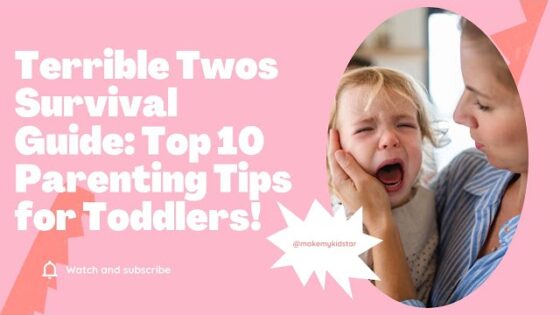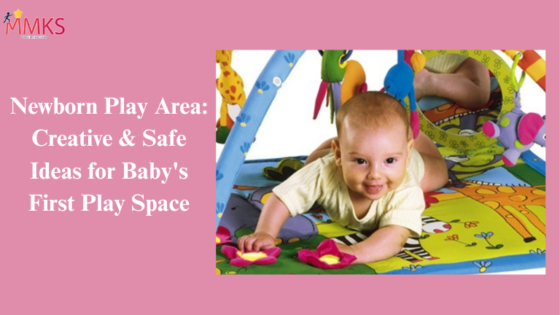Welcoming a new tooth can be an exciting milestone for your baby but can also bring discomfort. If you’re wondering how to help your teething baby navigate this phase, you’re in the right place.
With some simple strategies and tricks, you can make this transition smoother for you and your little one.
Understanding Teething Baby
Teething is a natural process in a baby’s development where their first set of teeth, also known as primary or baby teeth, begin to emerge through the gums. This typically starts around 6 months of age, though it can vary from child to child. Here are some simple tips and strategies to help you navigate this milestone with ease.
Teething Stages
Newborn Babies typically start teething around 6 months of age when their first tooth pushes through the gums. This process continues until they have a full set of primary teeth by the age of 3.
The teething stages can vary from one child to another, but some common signs include drooling, irritability, and swollen gums.
Signs and Symptoms of Teething
- Increased drooling
- Irritability or fussiness
- Gnawing or chewing on objects
- Swollen or tender gums
- Difficulty sleeping
- Loss of appetite
Tips to Help Your Teething Baby
Provide Relief Through Teething Toys
Teething toys are a great way to help your baby soothe their sore gums. Look for toys made of soft material that can be chilled in the refrigerator for added relief.
The act of chewing on these toys can help alleviate the discomfort caused by teething.
Try Natural Remedies
Natural remedies like a chilled washcloth or a clean finger to massage your baby’s gums can also provide relief.
You can also offer cold foods like pureed fruits or yogurt to help numb the gums. Just be sure to supervise your baby closely to prevent any choking hazards.
Maintain Oral Hygiene
Even before your baby’s teeth start coming in, it’s important to establish good oral hygiene habits.
Gently clean your baby’s gums with a soft cloth after feedings to prevent the buildup of bacteria.
As the teeth start to erupt, switch to a soft-bristled toothbrush designed for infants.
Top 10 teething remedies for your baby
Chilled Teething Rings: Place teething rings in the refrigerator for a while before giving them to your baby. The coldness can help numb the gums and provide relief from teething pain.
Frozen Washcloth: Dampen a clean washcloth, twist it, and then freeze it. The texture of the fabric and the cold temperature can help alleviate discomfort when your baby gnaws on it.
Cold Foods: Offer cold, soft foods such as yogurt, applesauce, or chilled fruit purees. The coldness can provide relief, and the soft texture is gentle on your baby’s gums.
Teething Toys: Look for teething toys made of safe, BPA-free materials. These toys often have different textures that can massage your baby’s gums and provide relief from teething discomfort.
Gentle Gum Massage: Use a clean finger to gently massage your baby’s gums. Apply light pressure in a circular motion to help soothe soreness.
Natural Teething Remedies: Some natural remedies like chamomile tea or clove oil (diluted with a carrier oil) applied to the gums can provide relief. However, it’s important to consult with your pediatrician before using any herbal remedies.
Pacifiers: Offer a clean, age-appropriate pacifier for your baby to suck on. The sucking action can provide comfort and distract your baby from teething pain.
Breastfeeding or Bottle-feeding: Nursing or offering a bottle can provide comfort to your teething child. The sucking motion can help soothe sore gums.
Distraction: Engage your baby in activities that distract them from the discomfort, such as singing, playing with toys, or going for a walk outside.
Cuddle Time: Sometimes, all your baby needs is some extra cuddle time with you. Holding your baby close and providing comfort through physical contact can help soothe teething woes.
More Coping Strategies for Teething Babies
Mesh Feeders: Load a mesh feeder with chilled fruit or frozen breast milk/formula and allow your baby to chew on it. This not only relieves sore gums but also introduces new tastes and textures.
Silicone Finger Toothbrush: Utilize a baby-appropriate silicone finger toothbrush to gently rub your baby’s gums. The soft bristles can alleviate discomfort and encourage oral hygiene.
Homemade Popsicles: Create homemade popsicles using pureed fruits or breast milk/formula and freeze them in ice cube trays or popsicle molds. These icy treats can offer relief and hydration for your teething child.
Amber Teething Necklaces: Some parents discover that amber teething necklaces, worn around the baby’s neck, alleviate teething discomfort. The body’s warmth is believed to release succinic acid, which naturally relieves pain.
Warm Baths: A warm bath can relax your baby and temporarily alleviate teething discomfort. Add a few drops of lavender essential oil to the bathwater for added relaxation.
Cool Face Cloth: Dampen a clean face cloth with cold water and gently apply it to your baby’s face. The coolness can reduce inflammation and provide relief around the mouth area.
Teething Biscuits: Offer teething biscuits designed for babies. These biscuits are safe for chewing and can relieve discomfort while satisfying your baby’s need to gnaw.
Teething Jewelry: Consider wearing teething jewelry like silicone teething necklaces or bracelets that your baby can safely chew on while being held or carried.
Music Therapy: Play calming music or white noise to help soothe your teething baby. Soft melodies or natural sounds can distract from discomfort and promote relaxation.
Teething Books: Provide soft teething books made of fabric or silicone for your baby to chew on. These books not only offer relief but also stimulate sensory exploration and early literacy skills.
Conclusion
Teething is a natural part of your baby’s development, but it can be a challenging time for both parents and babies.
By following these simple tips and strategies, you can help alleviate your baby’s discomfort and make the teething process a little smoother.
Remember to stay patient and provide lots of love and reassurance during this phase.
With proper care and attention, you’ll help your little one navigate each teething stage with ease.




































